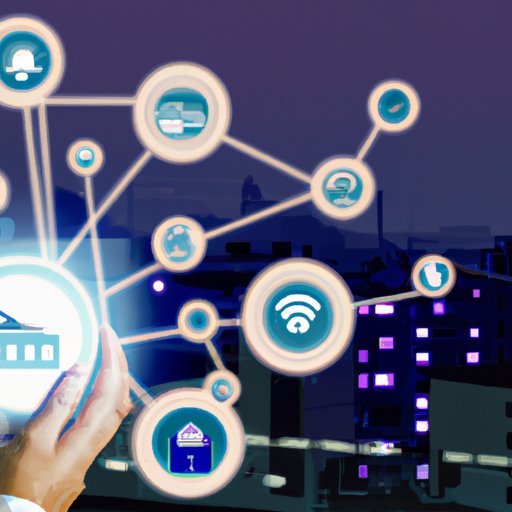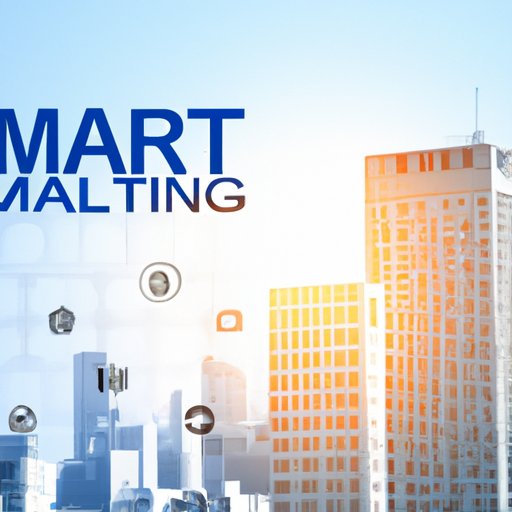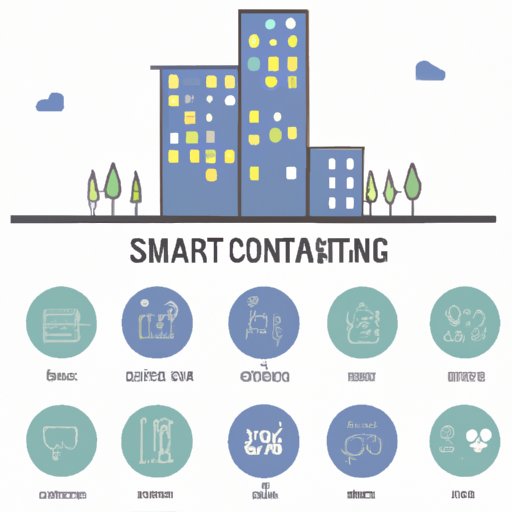Introduction
Smart building technology is revolutionizing the way we interact with our physical environment. As more and more businesses embrace the concept of a connected, automated building, the potential of this technology continues to expand. But what exactly is smart building technology? And how does it benefit us? This article will explore these questions and more, providing an in-depth look at the power of smart building technology and its applications.
Definition of Smart Building Technology
Smart building technology is defined as “the use of digital technologies to enhance the performance, energy efficiency and safety of a building.” It encompasses a wide range of technologies and solutions, including building management systems, energy management systems, comfort control systems, and more. By leveraging these technologies, businesses can create an environment that is more efficient, secure, and cost-effective.
Overview of Benefits
Smart building technology offers numerous benefits, including increased efficiency, improved security, and cost savings. In addition, it can also help to reduce environmental impacts by reducing energy consumption. With smart building technology, businesses can create a more efficient, safe, and comfortable environment for their employees and customers.

Exploring the Benefits of Smart Building Technology
The benefits of smart building technology are many. Let’s take a closer look at some of the most significant advantages:
Increased Efficiency
One of the primary benefits of smart building technology is increased efficiency. By automating processes and systems, businesses can reduce manual labor and streamline operations. According to a study conducted by McKinsey & Company, “smart building technologies can reduce operational costs by up to 30 percent.” This means that businesses can save money while simultaneously improving efficiency.
Improved Security
Smart building technology can also improve security. With access control systems and surveillance cameras, businesses can monitor and secure their premises more effectively. Additionally, the use of biometric authentication can help to ensure that only authorized personnel have access to sensitive areas of the building.
Cost Savings
In addition to increased efficiency and improved security, smart building technology can also help businesses save money. By using energy-efficient lighting and HVAC systems, businesses can reduce their energy costs significantly. Additionally, smart building technology can help businesses optimize their use of resources, further reducing overhead costs.

How Smart Building Technology is Transforming the Future of Buildings
Smart building technology is revolutionizing the way we interact with our physical environment. Through automation, connectivity, and sustainability, smart building technology is transforming the future of buildings and society. Here’s a closer look at how this technology is changing the world:
Automation
Automation is one of the key components of smart building technology. By automating processes and systems, businesses can reduce manual labor and streamline operations. For example, automated HVAC systems can be programmed to adjust temperature settings based on the time of day or the presence of people in the building. This reduces energy consumption and improves efficiency.
Connectivity
Connectivity is another key element of smart building technology. By connecting systems and devices, businesses can monitor and control their premises more effectively. For example, businesses can use wireless sensors to track temperature, humidity, and other environmental factors. This allows businesses to better manage their energy usage and optimize their operations.
Sustainability
Sustainability is an important aspect of smart building technology. By using energy-efficient lighting, HVAC systems, and other sustainable technologies, businesses can reduce their environmental impact. Additionally, smart building technology can help businesses monitor their energy usage and identify opportunities to conserve resources.
A Closer Look at Smart Building Technology
So, what are the types of smart building technologies available? And how are they being implemented? Let’s take a closer look:
Types of Smart Building Technologies
There are several different types of smart building technologies, including building management systems, energy management systems, comfort control systems, and more. Each type of technology offers different benefits and can be tailored to meet the specific needs of a business.
Examples of Implementation
Smart building technology is being used in a variety of ways. For example, businesses are using automated HVAC systems to reduce energy consumption and improve efficiency. Additionally, businesses are using access control systems to monitor and secure their premises. Finally, businesses are using energy management systems to track and optimize energy usage.
An Overview of Smart Building Technology and Its Applications
Now that we’ve explored the various types of smart building technologies, let’s take a closer look at some of the most common applications:
Building Management Systems
Building management systems (BMS) are used to automate and monitor a variety of building systems, such as HVAC, lighting, security, and more. BMS can be used to optimize operations and reduce energy consumption, resulting in cost savings and improved efficiency.
Energy Management Systems
Energy management systems (EMS) are used to monitor and optimize energy usage. EMS can track energy consumption in real time and identify opportunities to reduce energy costs. Additionally, EMS can be used to automate processes and systems, further improving efficiency.
Comfort Control Systems
Comfort control systems are used to maintain optimal temperature, humidity, and air quality levels in a building. These systems can be programmed to adjust temperature settings based on the time of day or the presence of people in the building. This helps to reduce energy consumption and improve comfort.

The Impact of Smart Building Technology on Society
Smart building technology is having a profound impact on society. From improved quality of life to enhanced productivity, this technology is transforming the way we live and work. Here’s a closer look at some of the ways smart building technology is making a difference:
Improved Quality of Life
Smart building technology is improving the quality of life for people around the world. By creating a more comfortable and secure environment, businesses can provide their employees and customers with a better experience. Additionally, smart building technology can help to reduce energy consumption and environmental impacts, resulting in a healthier, more sustainable world.
Enhanced Productivity
Smart building technology is also enhancing productivity. By automating processes and systems, businesses can streamline operations and reduce manual labor. This allows businesses to focus on higher-value tasks, resulting in improved efficiency and cost savings.
Positive Environmental Impact
Finally, smart building technology is having a positive impact on the environment. By leveraging energy-efficient technologies, businesses can reduce their energy consumption and carbon footprint. Additionally, smart building technology can help businesses monitor their resource usage and identify opportunities to conserve resources.
Conclusion
Smart building technology is revolutionizing the way we interact with our physical environment. From increased efficiency to improved security and cost savings, this technology offers numerous benefits. Additionally, it can help to reduce environmental impacts and improve the quality of life for people around the world. As more businesses embrace the concept of a connected, automated building, the potential of this technology continues to expand.
Summary of Smart Building Technology and its Benefits
In summary, smart building technology is a powerful tool that can be used to improve the efficiency, security, and cost-effectiveness of a business. Through automation, connectivity, and sustainability, this technology is transforming the future of buildings and society. From increased efficiency to improved security and cost savings, smart building technology offers numerous benefits for businesses and individuals alike.
Final Thoughts on the Power of Smart Building Technology
The potential of smart building technology is limitless. As businesses continue to adopt this technology, the possibilities for innovation and growth are endless. By leveraging the power of smart building technology, businesses can create a more efficient, secure, and cost-effective environment. In doing so, they can unlock new opportunities for success and make a positive impact on society.
(Note: Is this article not meeting your expectations? Do you have knowledge or insights to share? Unlock new opportunities and expand your reach by joining our authors team. Click Registration to join us and share your expertise with our readers.)
